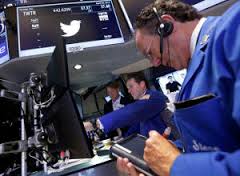Some industries are finding change as difficult as keeping up with innovation
It is hard to imagine Madonna going out of style in the late 1980s but as entropy carries us forward, Madonna must have seen her pending decline in music could only be reversed with a refocusing of her music, skill-sets set and approach to the marketplace. Madonna has since had a reasonable career as an actress, a highly successful (refocused) music career and a successful career in business. The twice married mother of 4 has currently a net worth of $520 million, which is a testament to Madonna’s call to action when faced with decline. By her actions, it’s not hard to see that she embraced change as a good thing and got ahead of the curve in a dynamic marketplace.
So if an Madonna can do it, can’t we all? I think so! That said, not everybody agrees, which is why we have what is often referred to as ‘the agents of change and the guardians of the status quo’. Needless to say, a happy balance of change and stability fit into every company and product lifecycle that exists in the increasingly hyperconnected world we live in.
The fact is that we are now in a hyperconnected age and to quote Marc Andreessen “Software is eating the world”. Companies, industries and society has a whole has had to come to terms with the new information era and deal with disruption as the new norm. What has become glaringly clear (in addition to positive changes society wide) is that some companies and indeed industries are better at dealing with change and innovation than others. What makes one better at change then the other is varied, but in general terms, the more successful change agents as companies tend to be:
Less dogmatic and thus less resistant to change. Instead of looking for ways to stop or stall change, they look for ways to embrace it.
More dynamic in terms of how one approaches problems with the marketplace. The glass is always half full and not half empty ergo priority is placed in innovating a way out of a problem that creates a better outcome instead of finding a way to restore the prior state to the problem. Thinking outside of the box is seen as a cherish virtue, not a despised vice.
Organisationally flexible to the point where organisational structures are set to allow horizontal workflows in orga charts and project management to occur based on people, not transactions. Company culture underpins this point of people, process, technology, not the other way around in terms of priority.
Innovation as a process (IAAP) is a reality, not a powerpoint chart aspiration. The management practices, leadership practices, financial planning and analysis processes of the company are geared up for innovation noting X% of people’s time will be on new product generation in all areas of the business participating in project teams, idea generation platforms and process management. This “non chargeable” portion of employee time is spent generating new products and bringing them forward to market.
Competition defined by collaboration, not confrontation. A careful monitoring of competition and collaboration with suitable competitors on “common good” goals for community and/or society (e.g. Open Source Hackathons) along with a set of ethics that define not only company policy but capture company culture and employee beliefs. It’s important that the substance of integrity is not watered down by some cheap “certification” by disengaged team leaders on an annual survey that their employees have “integrity.”
People first. The new age of collaboration in the information era favours companies that value people first allowing for the emotional quotient (EQ) to succeed. The days of awareness are here with hyper connectivity generating more and more understanding of the world around us thus connecting with our humanity, which is becoming understood as an essential driver of successful change. If employees are made redundant, it is the last, not the first port of call in reducing costs and is never done by tweet.
Cultural expectation is one of change and considered normal. The business practices of companies who are comfortable with change are geared up to not only survive it; they are geared up to thrive in it. The culture becomes comfortable with a cycle of innovation that sees cyclical projects arise disrupting their workflow and augmenting it with new innovations, which they contribute to for best possible outcome. They are in essence comfortable with a cycle of innovation/ disruption/ change/ understanding new working reality/ stable workflows/ innovation. This makes employees a driver of innovation, new product generation, high performance process structures and long term financial viability.
Innovation and disruption are often seen as threats, when infact they should be embraced fully taking the people who innovate into processes allowing a fusion to occur where like Madonna, something better is created as a result of embracing change that will not stop coming no matter how much we try to deny it. Even in the most rigid, dogmatic and vertical industries, change will reach its shores sooner or later and now is a great time to plan and effect change not only of R&D, but of the entire company making all functions innovative and connecting them by innovative connections as much as by functional lines. The outputs will herald change and flexibility along with a new sense of longevity thanks to the new version of the company, which is a powerhouse of process awareness, effective innovation and people oriented culture.
Sources/Credits:
Pics;
Credits:
http://www.forbes.com/forbes/welcome/ | Forbes for information on Madonna 2015
http://www.wsj.com/articles/SB10001424053111903480904576512250915629460 | Marc Andreessen “Software is eating the world”










